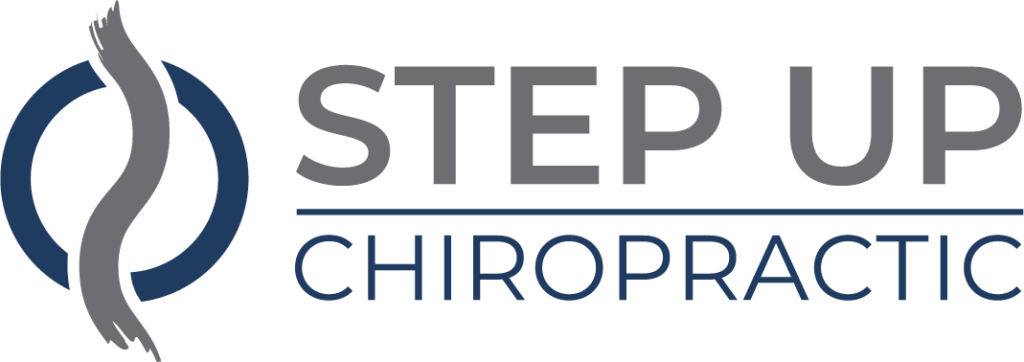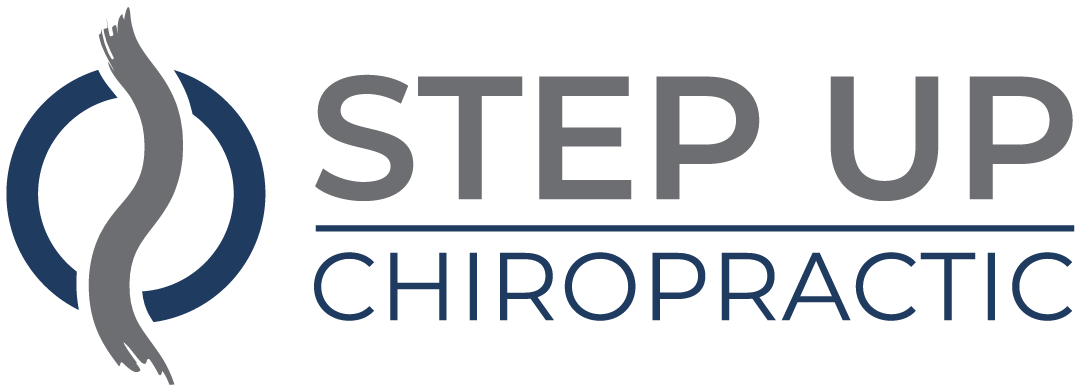You might think recovery is just about rest, but the latest insights reveal a far more complex picture. It's not only about physical techniques; integrating nutrition and psychological strategies can greatly enhance your recovery process. From active recovery methods to cutting-edge technologies like cryotherapy, the options are expanding. As you explore these advancements, you'll find that optimizing your approach could redefine your performance. What's more, are you aware of the latest trends that might soon change the way athletes recover?
Importance of Recovery
Recovery is fundamental for any athlete aiming to achieve peak performance. Without proper recovery, your body can't rebuild and repair itself, which can hinder your progress and increase the risk of injuries. You might push yourself during intense training, but if you neglect recovery, all that hard work could go to waste.
When you engage in physical activity, you're actually causing tiny tears in your muscle fibers. Recovery allows those fibers to heal and grow stronger. If you skip this critical phase, you might find yourself plateauing or even regressing in your performance. It's not just about taking a break; it's about actively supporting your body's healing process.
You should be mindful of various recovery techniques that can enhance your performance. This includes getting adequate sleep, staying hydrated, and maintaining a balanced diet rich in nutrients. These elements play a significant role in how quickly your body can bounce back.
Additionally, incorporating active recovery days—like light jogging or yoga—can promote blood flow and alleviate soreness. Listening to your body is also key. If you're feeling fatigued or sore, it's important to allow yourself the time to recover. Ignoring these signs can lead to overtraining and burnout, ultimately affecting your performance.
Latest Technologies in Recovery
Innovative technologies are transforming the way athletes recover, making it faster and more effective. You might be surprised by how tools like cryotherapy, electrical stimulation devices, and compression therapy systems have changed the game. These methods not only speed up recovery but also help in reducing pain and inflammation.
Cryotherapy, for instance, involves exposing your body to extremely cold temperatures for a short period. This process can considerably decrease muscle soreness and boost your recovery time after intense training sessions. You'll find that many athletes swear by it for its immediate relief and long-term benefits.
Another technology gaining traction is neuromuscular electrical stimulation (NMES). This technique uses electrical impulses to stimulate your muscles, promoting blood flow and reducing muscle fatigue. If you're looking to enhance your recovery routine, incorporating NMES can be a game-changer.
Compression therapy is also worth mentioning. Wearing compression garments or using pneumatic compression devices helps in improving circulation and reducing swelling. You may feel the difference in your recovery time, allowing you to get back to training sooner.
Wearable technology, like fitness trackers and smart recovery devices, can provide real-time data on your body's recovery status. By monitoring your heart rate variability and sleep patterns, these gadgets enable you to tailor your recovery strategies effectively.
Integrating these cutting-edge technologies into your recovery routine can lead to considerable improvements in your performance and overall well-being. Embrace these advancements, and watch your recovery process evolve.
Nutrition's Role in Recovery
Nutrition plays an essential role in your recovery process. By focusing on the right macronutrients, staying hydrated, and timing your nutrient intake, you can greatly enhance muscle repair and overall performance.
Let's explore how these elements can support your journey to ideal recovery.
Macronutrients for Muscle Repair
To fuel muscle repair effectively, understanding the role of macronutrients is crucial for athletes. Macronutrients—proteins, carbohydrates, and fats—play a critical role in your recovery process. Each macronutrient serves a unique purpose, and balancing them can enhance your muscle repair and overall performance.
- Proteins: They're the building blocks of muscle. Consuming adequate protein after workouts helps repair and rebuild muscle fibers.
- Carbohydrates: These are your primary energy source. Post-exercise, carbs replenish glycogen stores, which is essential for recovery and prepares you for your next workout.
- Fats: Healthy fats support hormone production and overall energy levels. Including sources like avocados and nuts in your diet can aid in long-term recovery.
- Timing: Eating the right macronutrients at the right times—especially within the post-workout window—can greatly impact your recovery.
Hydration's Impact on Recovery
Effective hydration is fundamental for athletes aiming to enhance their recovery. When you exercise, your body loses fluids through sweat and respiration, which can lead to dehydration. This can hinder your recovery process, affecting muscle repair, energy replenishment, and overall performance.
To guarantee you're reaping the benefits of your training, it's essential to maintain proper hydration levels. Water plays a key role in transporting nutrients to your cells, helping with muscle repair and reducing soreness. Electrolytes, such as sodium and potassium, also help maintain fluid balance, which is critical for ideal recovery.
If you're not adequately hydrated, you might experience fatigue, cramps, or longer recovery times, which can set you back in your training regimen. To stay on top of your hydration game, aim to drink water consistently throughout the day, not just during workouts.
Consider your sweat rate and adjust your fluid intake accordingly. Incorporating hydrating foods, like fruits and vegetables, can also contribute to your overall hydration. Remember, your body needs the right balance of fluids to bounce back stronger after every session, so make hydration a priority in your recovery strategy.
Timing Nutrient Intake
After ensuring you're properly hydrated, the next step in optimizing your recovery is timing your nutrient intake. Consuming the right nutrients at the right times can greatly enhance your recovery process.
Focus on these key timings:
- Post-Workout Window: Aim to eat a balanced meal or snack within 30-60 minutes after your workout. This helps replenish glycogen stores and kickstarts muscle repair.
- Pre-Workout Fuel: Eating a combination of carbohydrates and protein 1-3 hours before exercise can provide sustained energy and minimize muscle breakdown.
- Evening Nutrition: Include a protein-rich snack before bed. This supports overnight muscle repair and growth, helping you wake up ready for your next challenge.
- Hydration with Nutrients: Consider incorporating electrolyte-rich beverages post-exercise. They can aid in recovery by replenishing lost minerals.
Active Recovery Techniques
Engaging in active recovery techniques can considerably enhance your post-workout recovery process. Unlike complete rest, active recovery involves low-intensity activities that keep your body moving while promoting blood flow. This increased circulation helps deliver nutrients to your muscles, aiding in their repair and reducing soreness.
One effective method is light aerobic exercise, such as walking, cycling, or swimming. These activities can help flush out lactic acid accumulated during intense workouts. Aim for 20-30 minutes of easy activity, ideally within a few hours after your training session. You'll find that this gentle movement keeps your muscles engaged without putting undue stress on them.
Incorporating dynamic stretching or yoga into your recovery routine can also be beneficial. These practices improve flexibility and mobility, helping to release tension in your muscles. Spend time working through gentle stretches that target the areas you trained, focusing on your breathing to enhance relaxation.
Foam rolling is another excellent active recovery technique. By rolling out tight muscles, you can alleviate soreness and improve tissue quality. Spend about 10-15 minutes on areas that feel particularly tight, using controlled pressure to massage the muscle fibers.
Lastly, consider engaging in recreational sports or activities that you enjoy. This keeps your body active without the mental strain of a structured workout. Whether it's playing a casual game of basketball or going for a leisurely hike, find something fun that keeps you moving.
Embrace these active recovery techniques, and you'll feel the positive impact on your overall recovery and performance.
Sleep and Recovery Optimization
Active recovery techniques play an essential role in enhancing your post-workout routine, but they're just one piece of the puzzle. To truly optimize your recovery, you can't overlook the importance of sleep. Quality sleep is crucial for muscle repair, hormone regulation, and overall physical performance.
When you prioritize restorative sleep, you set the stage for your body to recover more effectively and be ready for your next workout.
Here are some tips to enhance your sleep and recovery:
- Establish a bedtime routine: Create a calming routine to signal to your body that it's time to wind down. This could include reading, stretching, or meditating.
- Limit screen time before bed: The blue light emitted by screens can disrupt your circadian rhythm. Try to avoid screens at least an hour before sleep.
- Create a comfortable sleep environment: Keep your bedroom dark, cool, and quiet to encourage deeper sleep. Consider investing in blackout curtains or a white noise machine.
- Monitor your caffeine intake: Consuming caffeine too late in the day can affect your sleep quality. Try to limit your caffeine consumption in the afternoon and evening.
Psychological Aspects of Recovery
Understanding the psychological aspects of recovery is vital for athletes seeking to enhance their performance. Your mindset plays a critical role in how effectively you recover from physical exertion. A positive attitude can greatly impact your motivation, resilience, and overall recovery process. If you view recovery as an important part of your training, you're more likely to embrace it fully.
Stress and anxiety often accompany intense training and competition. These feelings can hinder your recovery by increasing muscle tension and delaying healing. To combat this, practicing mindfulness and relaxation techniques can be immensely beneficial. Techniques like meditation or deep-breathing exercises help you manage stress levels and create a more conducive environment for recovery.
Visualization is another powerful tool. When you visualize the recovery process, you mentally prepare your body to heal. Imagine yourself feeling refreshed and strong after a rest period; this mental imagery can promote a quicker physical recovery.
Additionally, social support plays a key role in your psychological recovery. Surrounding yourself with supportive teammates, coaches, and friends can provide encouragement and motivation. Sharing your recovery goals with them can further enhance your commitment.
Lastly, setting realistic recovery goals can help you maintain a positive mindset. Celebrate small victories as you progress through your recovery journey.
Future Trends in Recovery Techniques
As you look ahead in athlete recovery, you'll notice exciting advancements like wearable technology that tracks your body's needs in real-time.
Personalized recovery protocols are becoming more common, ensuring that your regimen fits your unique requirements.
Plus, integrating mindfulness techniques can enhance both your mental and physical recovery, making it a holistic approach to performance.
Wearable Technology Advancements
Wearable technology is rapidly transforming the landscape of athlete recovery, offering unprecedented insights and support for maximizing performance. These innovations provide real-time data, helping you understand your body's needs better than ever.
By integrating advanced sensors and analytics, wearables can track various metrics that are essential for your recovery process.
Here are some key advancements in wearable technology for recovery:
- Sleep Monitoring: Devices that analyze your sleep patterns, helping you improve rest quality.
- Heart Rate Variability: Wearables that measure HRV, giving you insight into your recovery status and stress levels.
- Muscle Recovery Sensors: Technology that assesses muscle fatigue and guides you on ideal recovery strategies.
- Hydration Tracking: Gadgets that monitor your hydration levels, ensuring you're adequately replenished post-exercise.
With these tools, you can make informed decisions about your recovery routine.
Embracing wearable technology not only enhances your understanding of your body but also empowers you to maximize your recovery, leading to improved athletic performance.
As these advancements continue to evolve, you'll find even more ways to enhance your recovery techniques effectively.
Personalized Recovery Protocols
The future of athlete recovery is leaning toward personalized recovery protocols that cater to individual needs and responses. As you engage in your training, it's crucial to recognize that no two athletes recover the same way. Factors like your age, fitness level, injury history, and even genetic makeup play a significant role in how your body responds to different recovery techniques.
By utilizing data-driven insights gathered from wearables and biometric assessments, you can create a tailored recovery plan that suits your specific requirements. This may include customized nutrition regimens, sleep strategies, and targeted physical therapies. For instance, if you struggle with muscle soreness, incorporating targeted massage or contrast baths might be beneficial.
Moreover, you'll find that periodic adjustments based on your progress and performance metrics can enhance your recovery efficiency. Regular feedback loops can help you stay on track and make necessary tweaks.
Embracing these personalized protocols means you'll not only enhance your recovery but also boost your overall athletic performance. As you move forward, consider how a bespoke approach to recovery can help you access your full potential and keep you in peak condition.
Mindfulness Integration Techniques
Incorporating mindfulness into your recovery routine can greatly enhance your overall performance and well-being. By focusing on the present moment, you can reduce stress, improve mental clarity, and foster a deeper connection with your body.
This won't only aid your physical recovery but also optimize your mental resilience.
Here are some mindfulness integration techniques you can try:
- Breathing Exercises: Spend a few minutes each day focusing on your breath. Inhale deeply, hold for a moment, and then exhale slowly. This calms your mind and promotes relaxation.
- Body Scans: Lie down comfortably and mentally scan your body from head to toe. Acknowledge any tension or discomfort and breathe into those areas to release stress.
- Meditative Movement: Engage in yoga or tai chi to combine movement with mindfulness. This helps improve flexibility while centering your thoughts.
- Gratitude Journaling: Reflect on your day and jot down things you're grateful for. This practice shifts your mindset and enhances overall positivity.
Conclusion
Incorporating these updated recovery techniques can greatly enhance your athletic performance and overall well-being. By blending physical activities, proper nutrition, and mental strategies, you create an all-encompassing recovery plan that works for you. Embrace new technologies and prioritize sleep to optimize your recovery further. Remember, taking care of your body and mind is essential for reaching your peak potential. Stay proactive in exploring future trends to keep your recovery game strong and effective.




